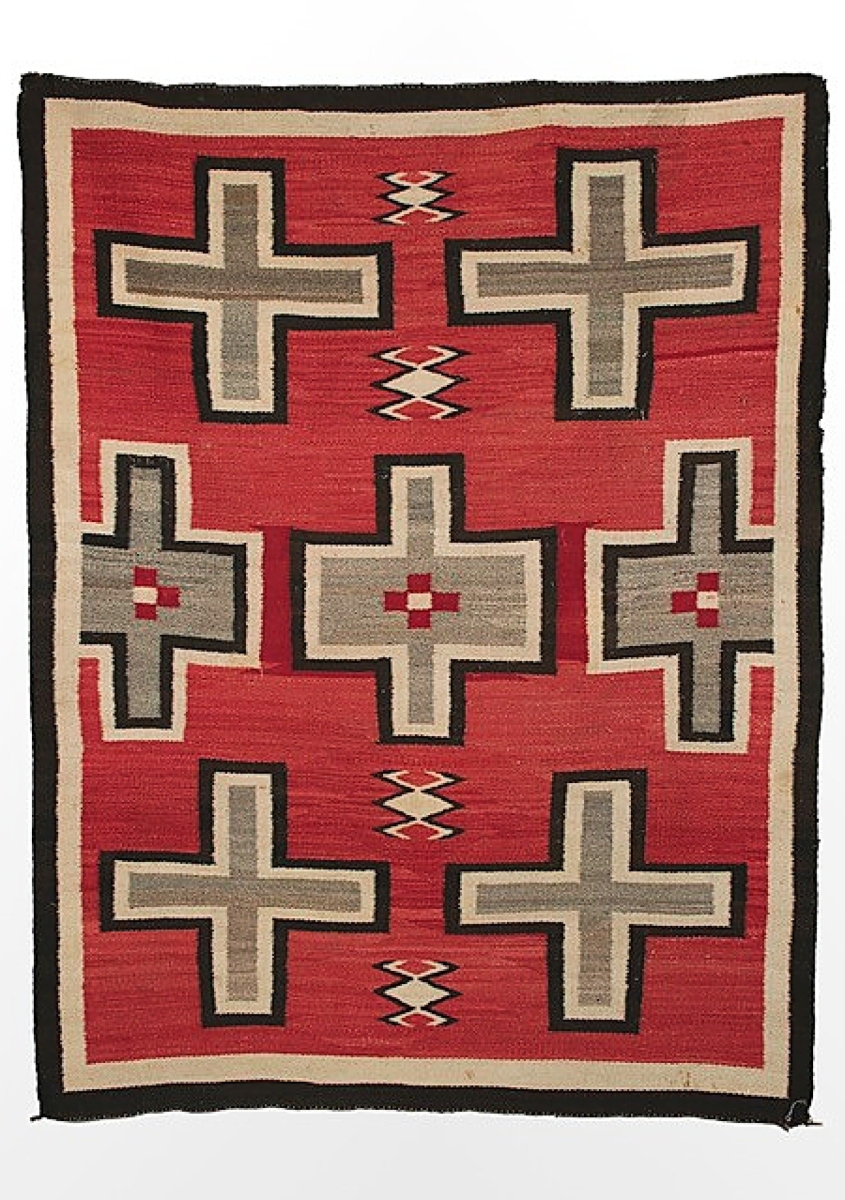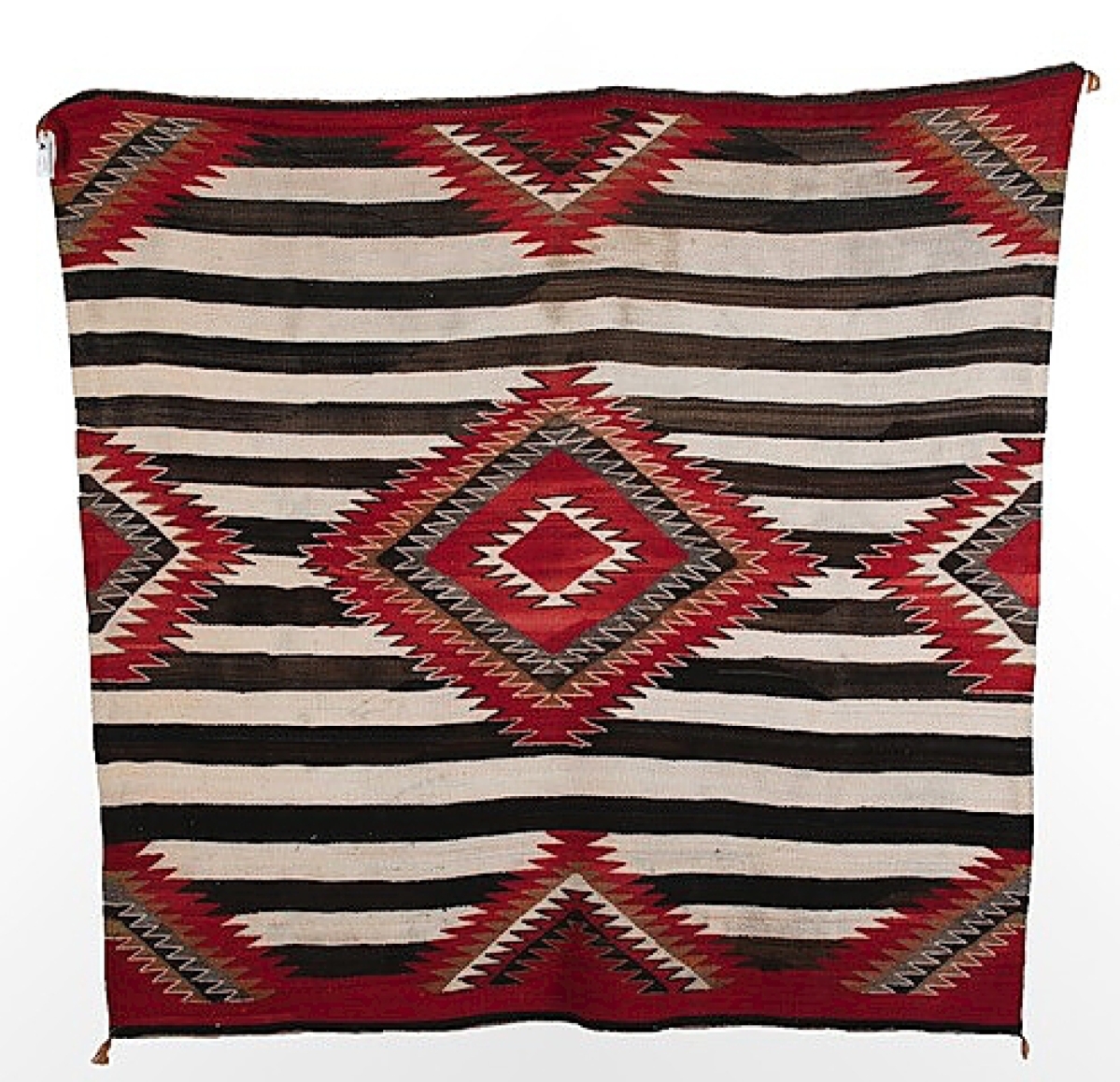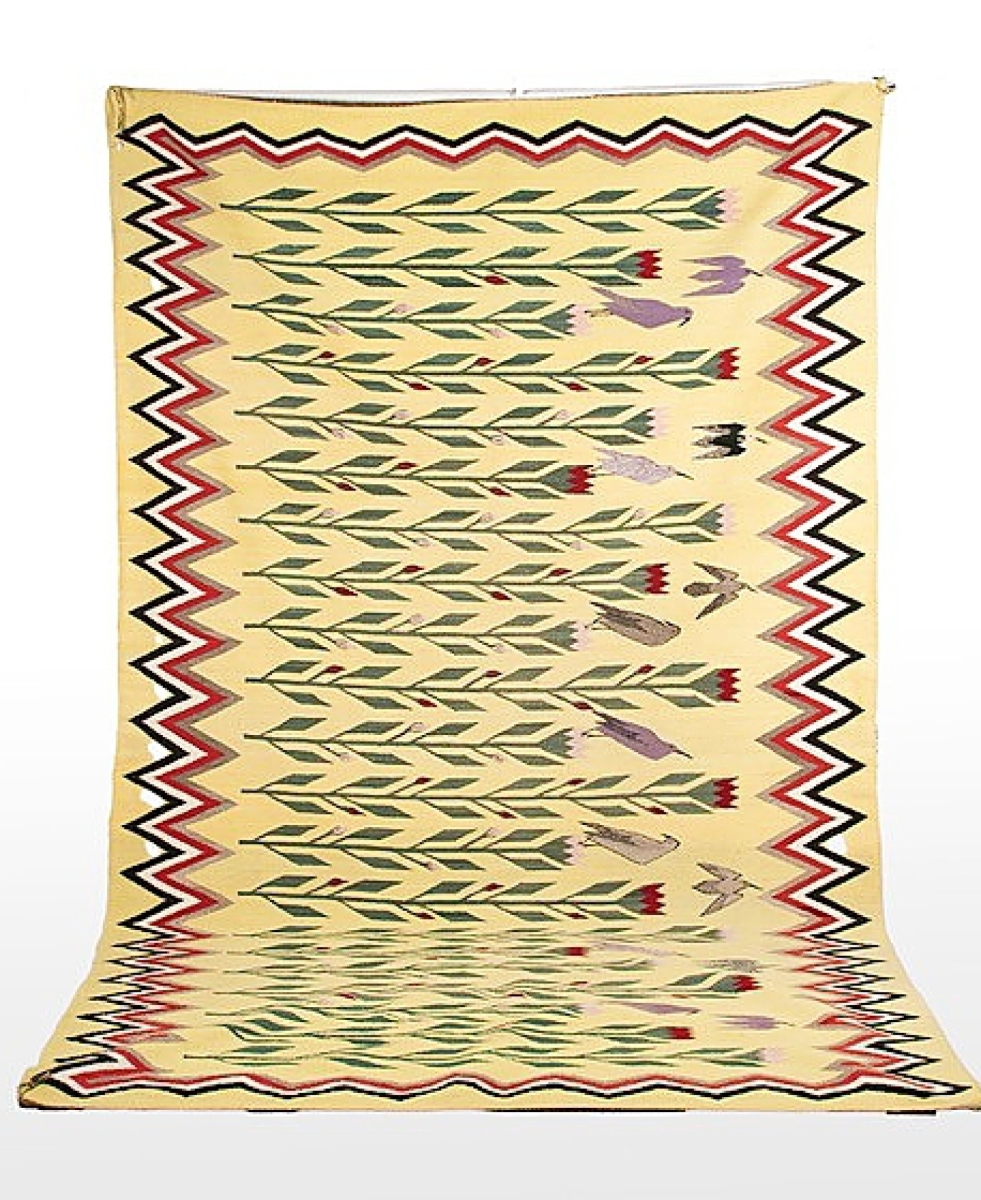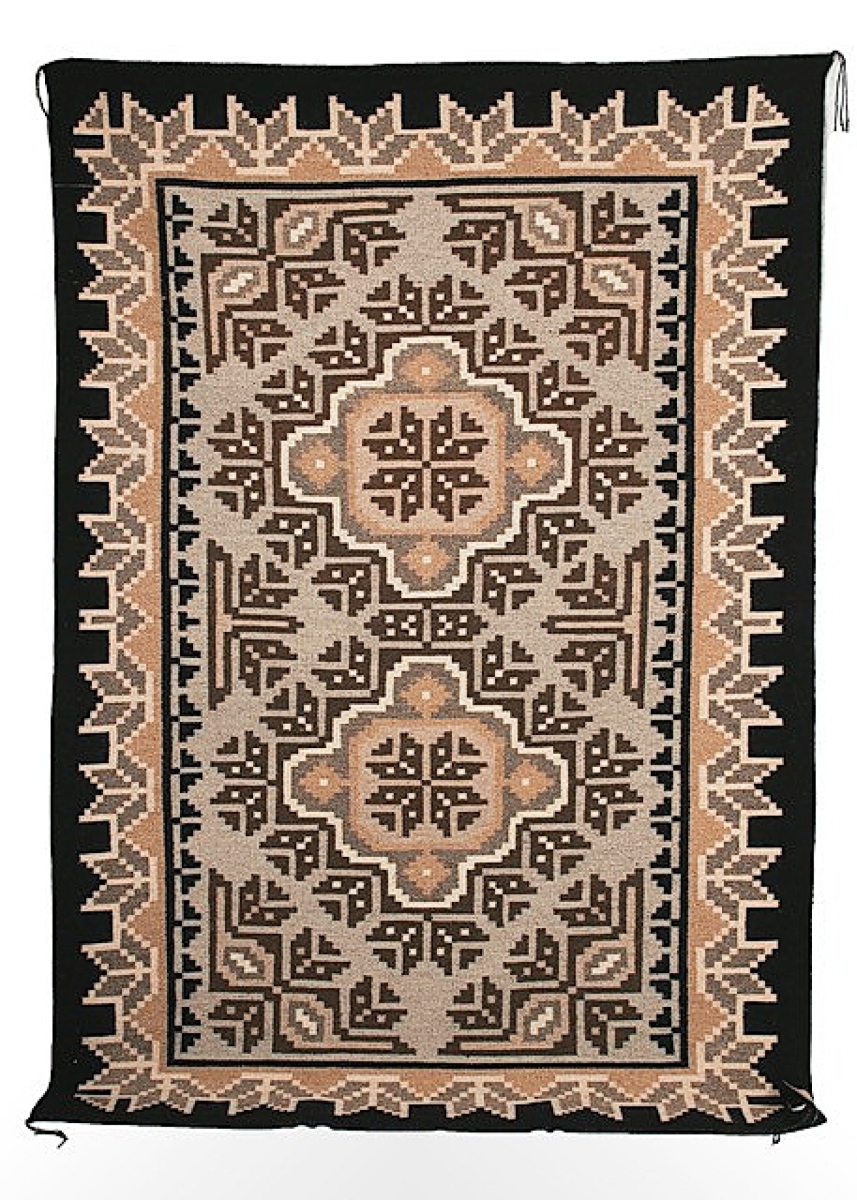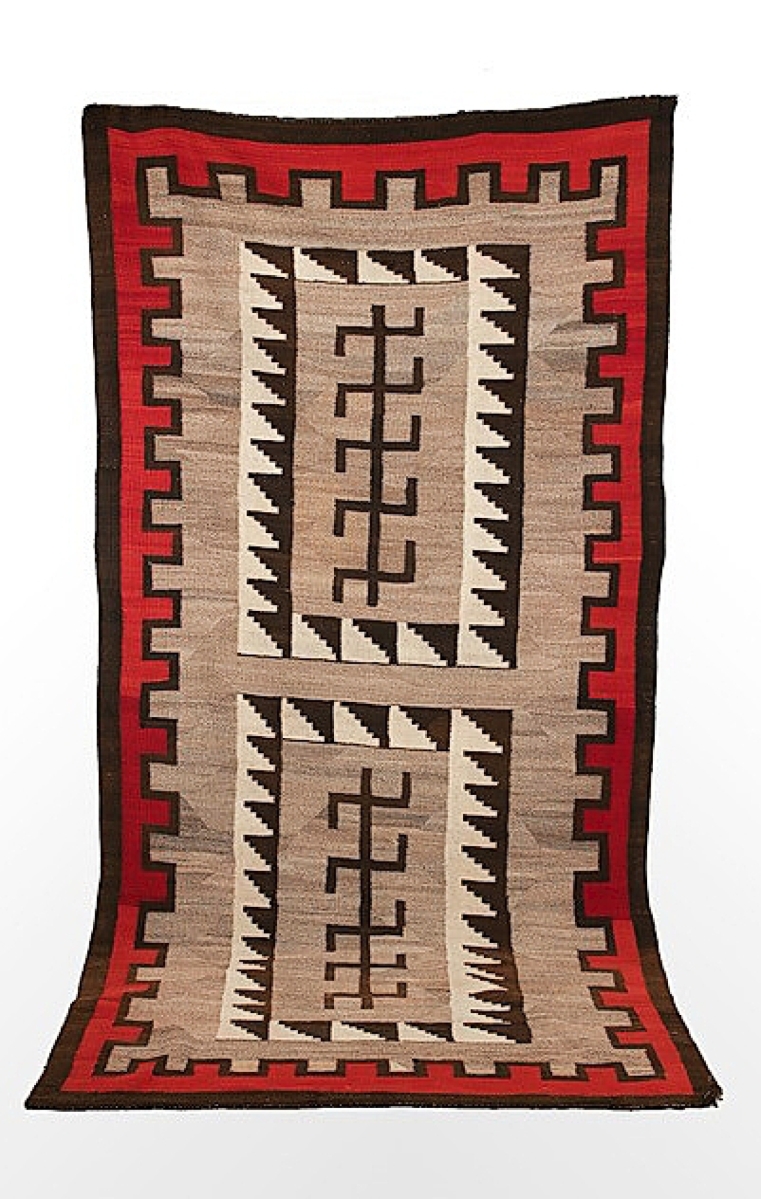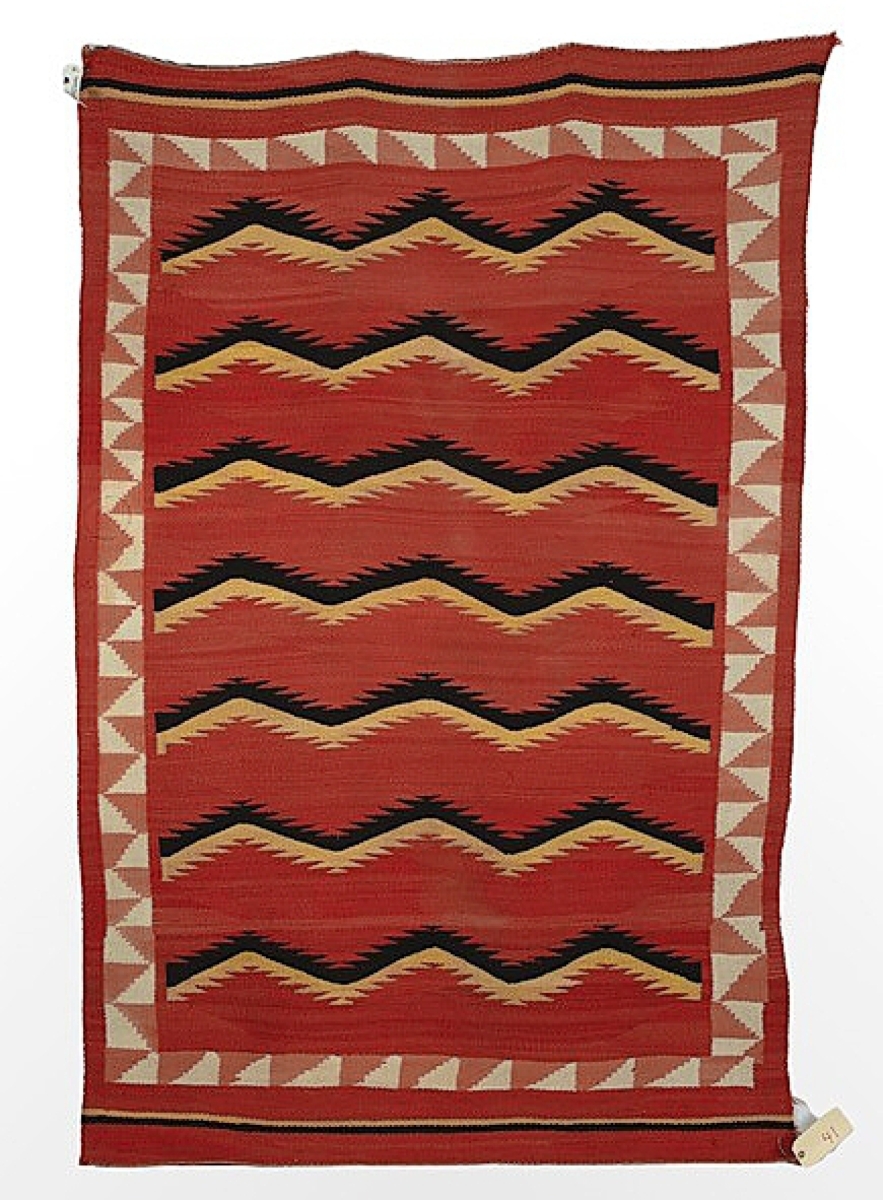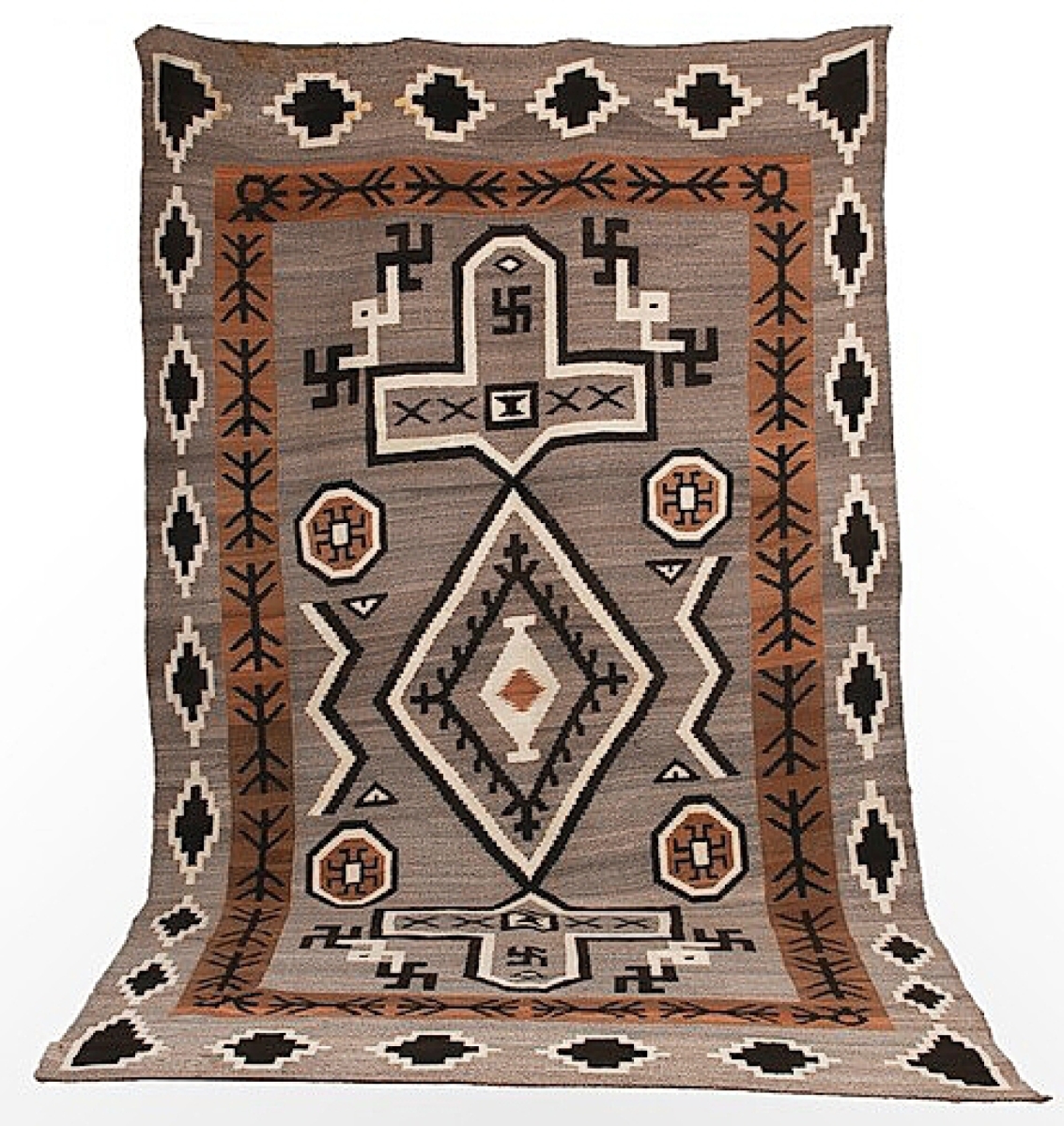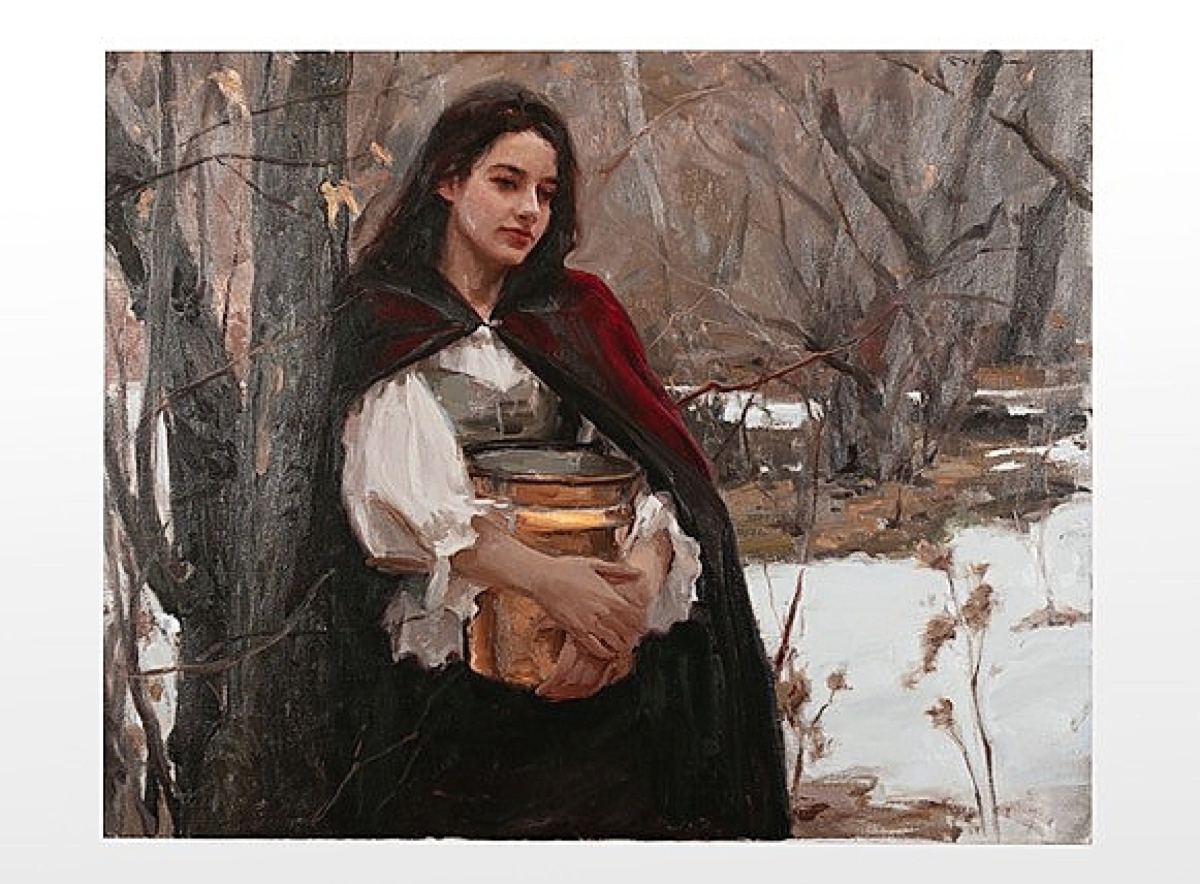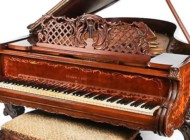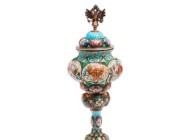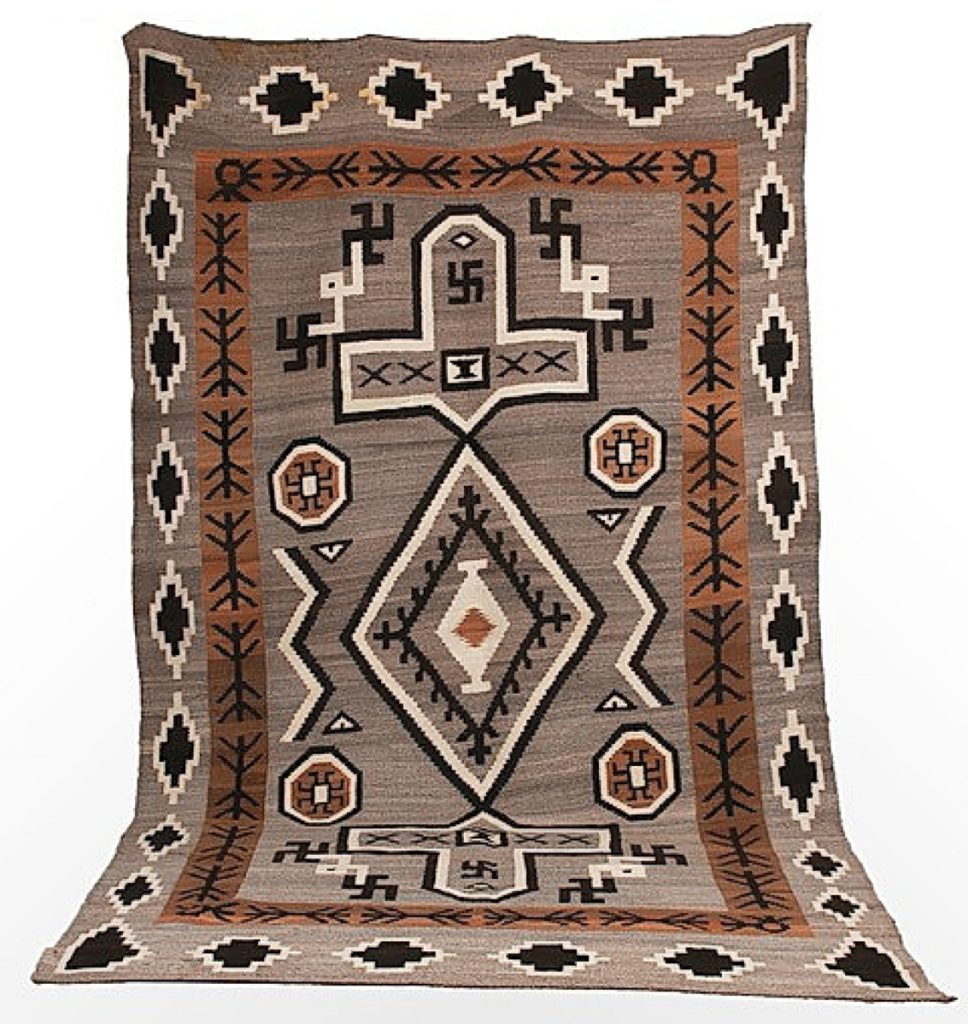
Topping the sale in which all of the rugs sold was “Whirling Logs,” circa 1910s, in brown tones, 124 by 72 inches, which realized $5,166.
Review by W.A. Demers, Photos Courtesy Nathan Auction & Real Estate
MANCHESTER, VT. – Nathan Auction & Real Estate sold the collection of 55 Native American rugs and 25 selected works of art from the collections of Bruce Laumeister and Elizabeth Small in an online timed auction through Invaluable that closed on June 3. Leading the lots was a large, exhibition-quality Navajo “Whirling Logs” rug in brown tones, circa 1910s, 124 by 72 inches, that sold to a California collector for $5,166. All of the rugs sold, while just seven of the paintings found buyers. “The rugs were a beautiful collection,” said Nathan after the sale. “It seems that the secondary market, however, is unkind to unknown Western artists.”
Laumeister and Small were the founders of the Bennington Center for the Arts, which recently changed hands. The center’s Navajo rugs and paintings – for this sale Eric Nathan chose those with women as subjects – have been a significant part of the permanent collection and on display in the museum galleries since it was built in the early 1990s. The Whirling Log symbol has its origins in Navajo sand paintings as a sacred symbol for healing. In the Navajo language it translates to, “that which revolves.” Essentially a swastika motif, which goes back thousands of years in human culture, in the Navajo culture the swastika or Whirling Log, represents well-being, good luck and protection. It comes from a story of an outcast who decides to climb into a log and float down the river to a distant land where he might find peace and safety. Along the way he has many misadventures, which ultimately result in his gaining important ceremonial knowledge.
Another Navajo “Whirling Logs” pattern rug, this one circa 1920s, went out at $4,428. Its dimensions were 113 by 54 inches. According to the Nizhoni Ranch Gallery’s website, a trove of information on Navajo rugs, until the late 1800s, when J. Lorenzo Hubbell (American, 1953-1930) and John Bradford Moore (Anerican, 1855-1926) opened their trading posts in Arizona and New Mexico, Navajos portrayed the swastika solely in their religious ceremonies in the form of sand paintings. But by 1896, with prodding by Hubbell and Moore, the symbol proliferated on Navajo rugs.
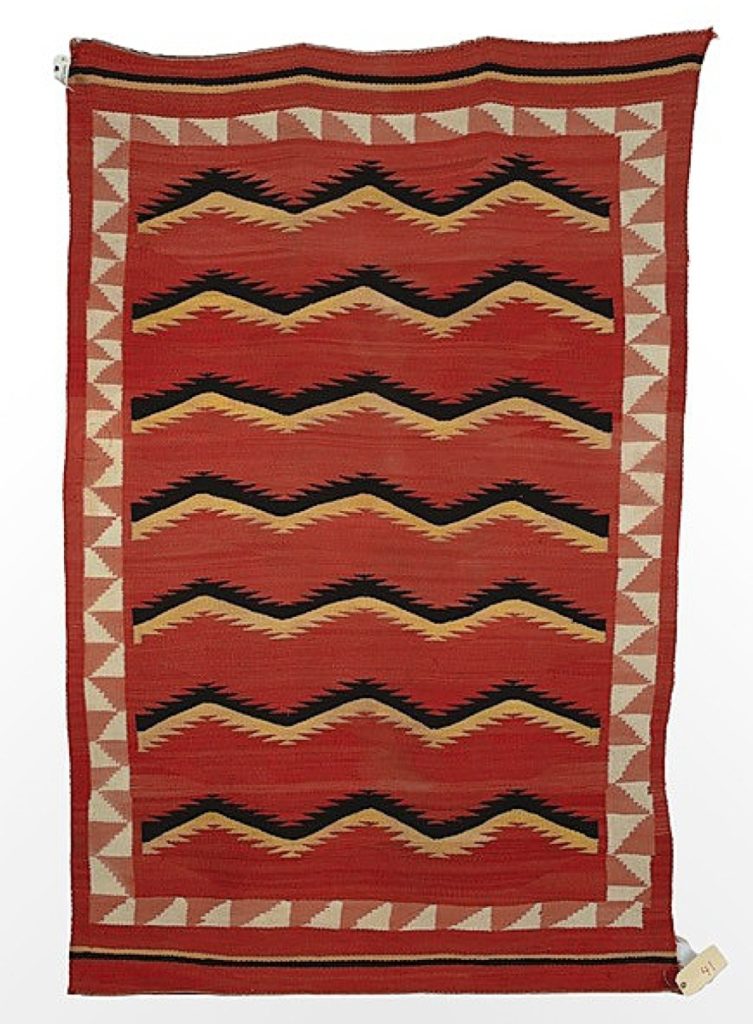
From the 1900s and decorated with bands of waves on a red field, this Navajo woman’s wearing blanket, 51 by 80 inches, was bid to $3,444.
In 1940, in response to Hitler’s regime, the Navajo, Papago, Apache and Hopi people signed a whirling log proclamation. It read, “Because the above ornament, which has been a symbol of friendship among our forefathers for many centuries, has been desecrated recently by another nation of peoples, therefore it is resolved that henceforth from this date on and forever more our tribes renounce the use of the emblem commonly known today as the swastika… on our blankets, baskets, art objects, sand paintings and clothing.”
Decorated with bands of waves on a red field, a Navajo woman’s wearing blanket was bid to $3,444. The-51-by-80-inch textile dated from the 1900s.
A field of yellow dotted with cotton balls comprised Navajo with birds and flowers that went out at $3,075, The 1968 textile, 126½ by 76½ inches, was attributed to Ason Ti Yellowhair as its maker.
Storm pattern rugs are among the most popular Navajo rug designs, popularized at the Crystal Trading Post at the turn of the last century. The pattern was one of several marketed by Moore, proprietor of the trading post, to Navajo rug buyers back East. The design is recognizable by its large central rectangle, four smaller rectangles – one in each corner – that are connected to the large rectangle by zig-zag lines. The precise origin of the pattern is unknown, but it was the weavers at Crystal that made the rugs with this pattern the sought-after collectors’ items that they are today. A 68-by-54½-inch example from the Laumeister collection offered in this sale rose to $2,583. From 2001 and made by Ella Henderson, it featured both modern and traditional elements, and was a Blue Ribbon winner, Gallop, N.M.
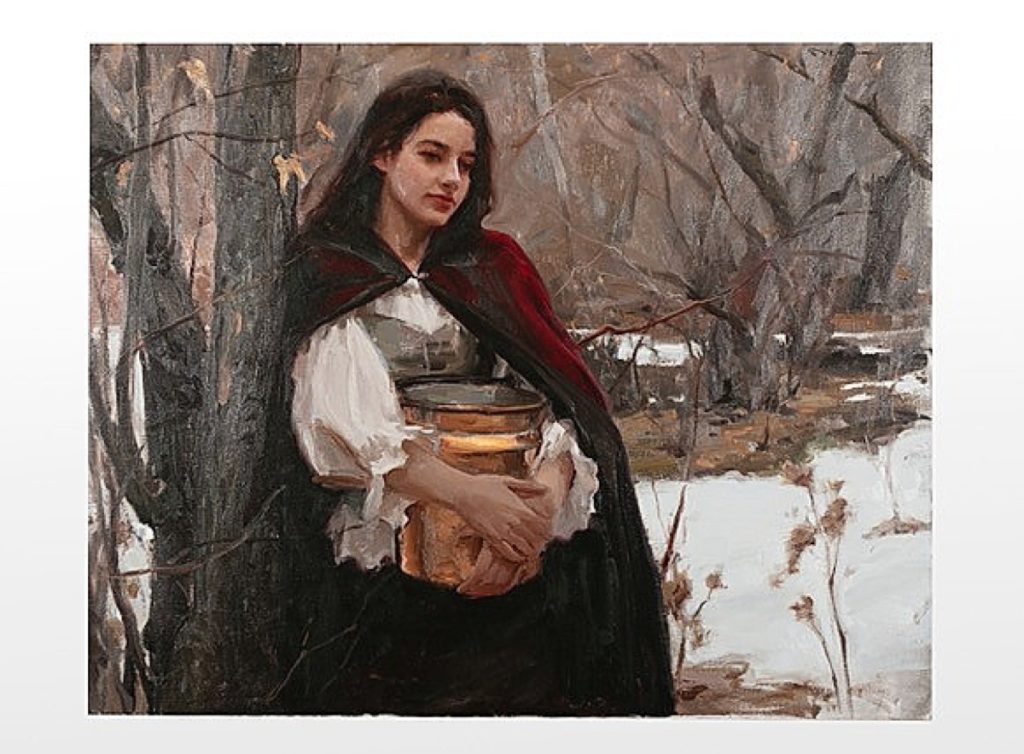
One of the fine art highlights among the 25 works of art offered in the sale — all depicting women — was this Michael Malm oil on canvas from 1972. “Winter Afternoon,” depicting a pensive young woman in pioneer garb holding a bucket in a wooded scene, 24 by 30 inches, realized $1,230.
Additional rug highlights included a Third Phase chief’s blanket at $2,214 and an example with seven crosses on a red field that drew $2,091.
“I was pleased that even the more contemporary rugs in the collection were well received,” said Nathan.
There were fine art highlights in the sale as well, as stated above, on the distaff side. Most notable was “Winter Afternoon,” by Michael Malm (American, b 1972) depicting a pensive young woman in pioneer garb holding a bucket in a wooded scene. A contemporary artist from northern Utah, Malm uses the surrounding rural communities and settings as backdrops for his figure paintings and inspiration for his landscapes. The 24-by-30-inch oil on canvas from 1972 realized $1,230.
Prices given include the buyer’s premium as stated by the auction house. Nathan is preparing two upcoming sales this summer, dates to be announced. One is an online and onsite event and the other will be an onsite estate auction. For additional information, www.nathanre.com or 802-362-3194.

